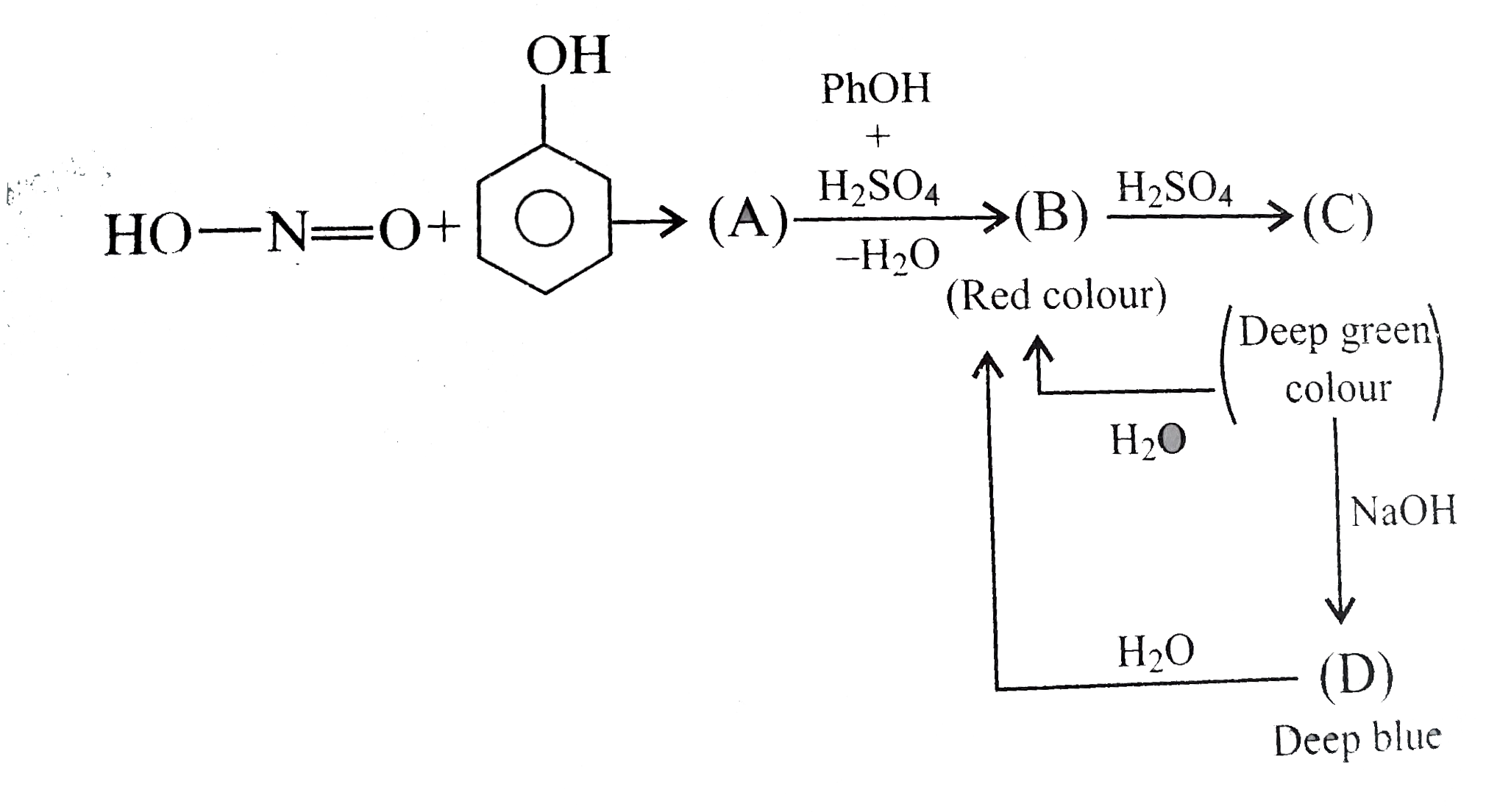Neutral ferric chloride is added to the aqueous solution of acetate. The blood red colour is obtained, it is due to the compound
Fe(OH)2
Fe(OH)3
[Fe3(CH3COO)6(OH)2]+
Fe(OH)2(CH3COO)
The correct Answer is:C
To solve the question regarding the formation of a blood red color when neutral ferric chloride is added to an aqueous solution of acetate, we can follow these steps:
1. Identify the Components:
- Neutral ferric chloride is represented as FeCl3. It contains ferric ions (Fe³⁺) and chloride ions (Cl⁻).
- Acetate ions are represented as CH3COO⁻.
2. Understanding the Reaction:
- When neutral ferric chloride (FeCl3) is added to an acetate solution, the ferric ions (Fe³⁺) interact with the acetate ions (CH3COO⁻).
3. Chemical Reaction:
- The reaction can be represented as:
Fe3++6CH3COO−→Fe(CH3COO)3+6+3H2O
- This shows that one ferric ion reacts with six acetate ions to form a complex.
4. Formation of the Blood Red Color:
- The complex formed, Fe(CH3COO)3+6, is responsible for the blood red color observed in the solution. This complex has distinct optical properties that result in the red coloration.
5. Conclusion:
- The blood red color is due to the formation of the ferric acetate complex, Fe(CH3COO)3+6.
Final Answer:
The blood red color is due to the formation of the compound Fe(CH3COO)3+6.
---
- Neutral ferric chloride is represented as FeCl3. It contains ferric ions (Fe³⁺) and chloride ions (Cl⁻).
- Acetate ions are represented as CH3COO⁻.
- When neutral ferric chloride (FeCl3) is added to an acetate solution, the ferric ions (Fe³⁺) interact with the acetate ions (CH3COO⁻).
- The reaction can be represented as:
Fe3++6CH3COO−→Fe(CH3COO)3+6+3H2O
- This shows that one ferric ion reacts with six acetate ions to form a complex.
- The complex formed, Fe(CH3COO)3+6, is responsible for the blood red color observed in the solution. This complex has distinct optical properties that result in the red coloration.
- The blood red color is due to the formation of the ferric acetate complex, Fe(CH3COO)3+6.
The blood red color is due to the formation of the compound Fe(CH3COO)3+6.
Similar Questions
Knowledge Check
For detection of sulphur in an organic compound, sodium nitroprusside is added to the sodium extract. A violet colour is obtained which is due to the formation of
ANa4[Fe(CN)5NOS]BNa3Fe(CN)6CFe(CNS)3DNa[Fe(CN)5NS]

The red colour of compound (B) is due to the formation of:
View SolutionThe colour of red snow is due to
View SolutionRed colour of tomato and chilly is due to :-
View SolutionWhen excess of dilute NH4OH is added to an aqueous solution of copper sulphate an intense blue colour is developed.This is due to the formation of:
View SolutionRed colour of tomato is due to
View SolutionThe red colour of oxyhaemoglobin is mainly due to
View SolutionWhen NH4OH is added to copper sulphate solution, blue colour is obtained due to formation of
View Solution